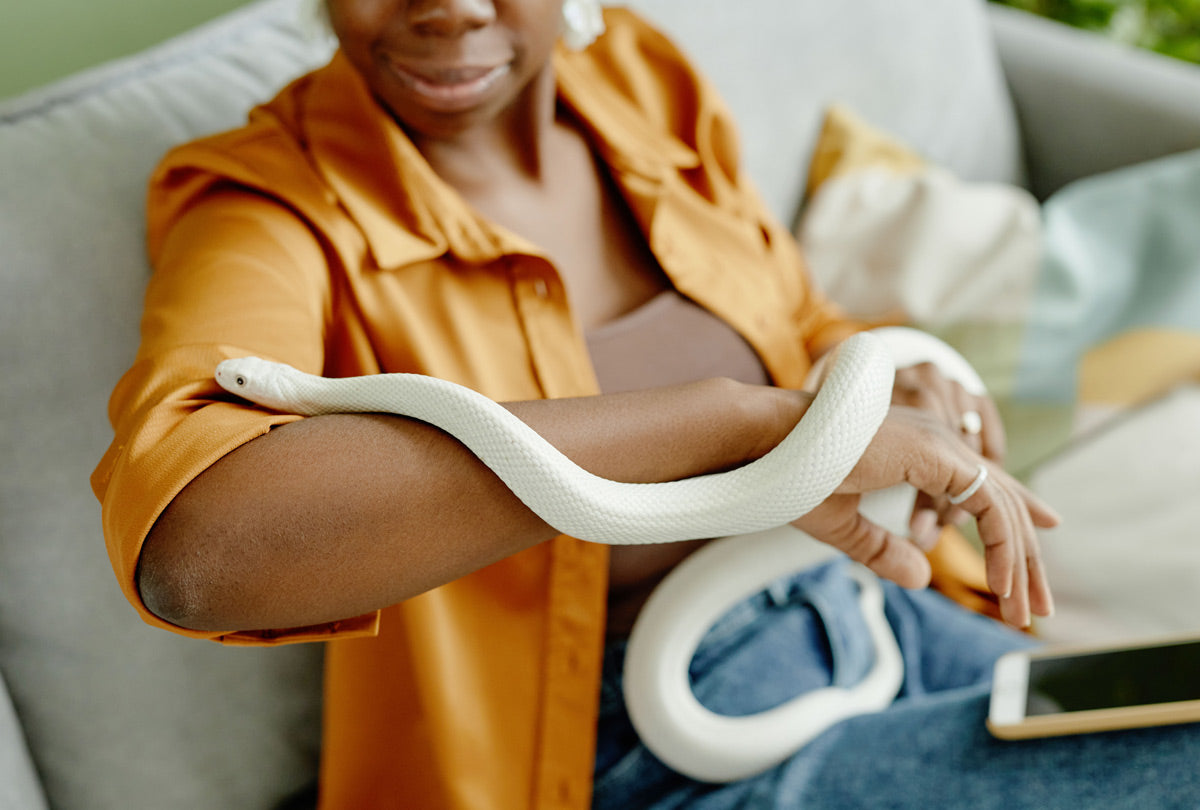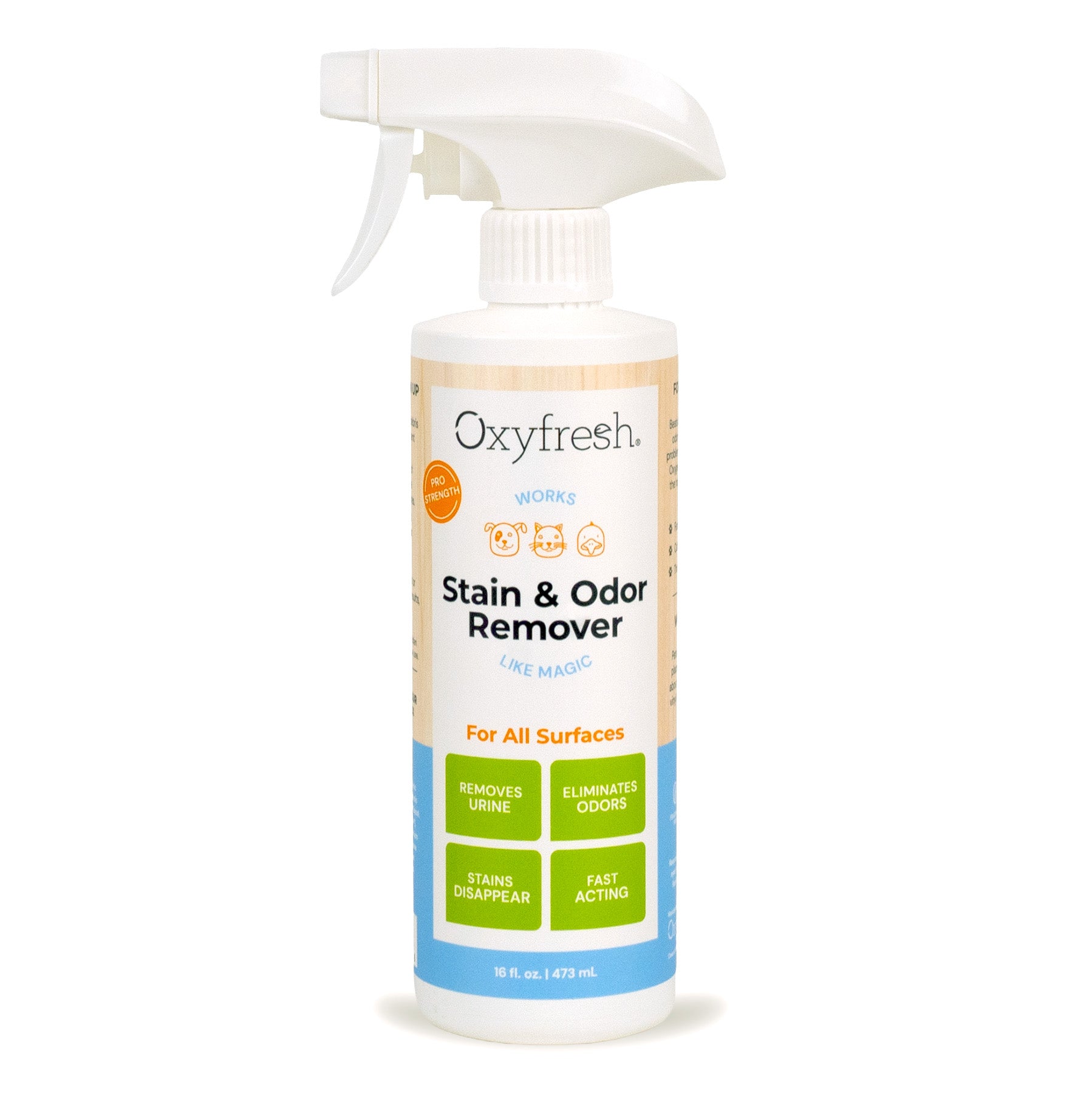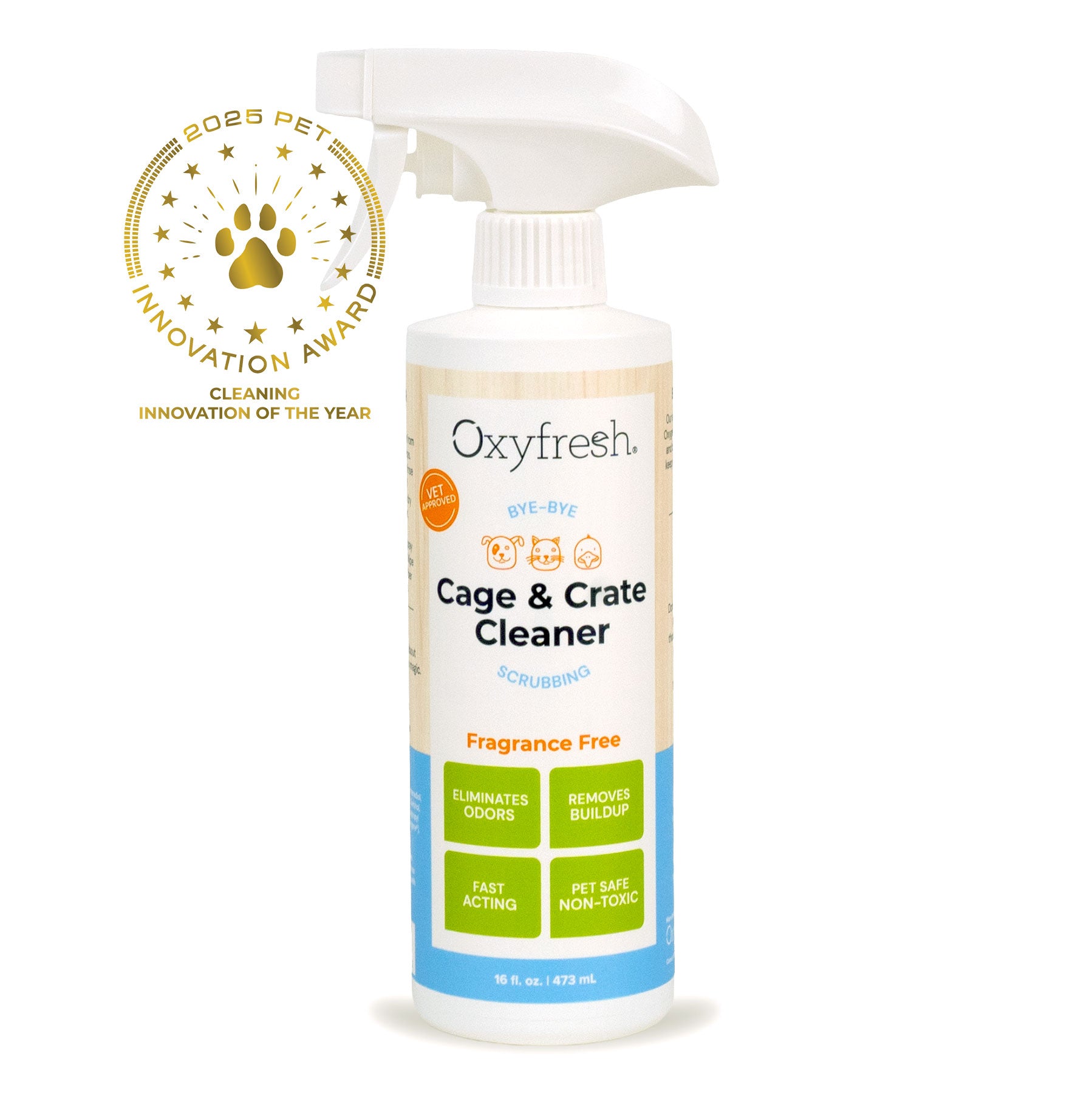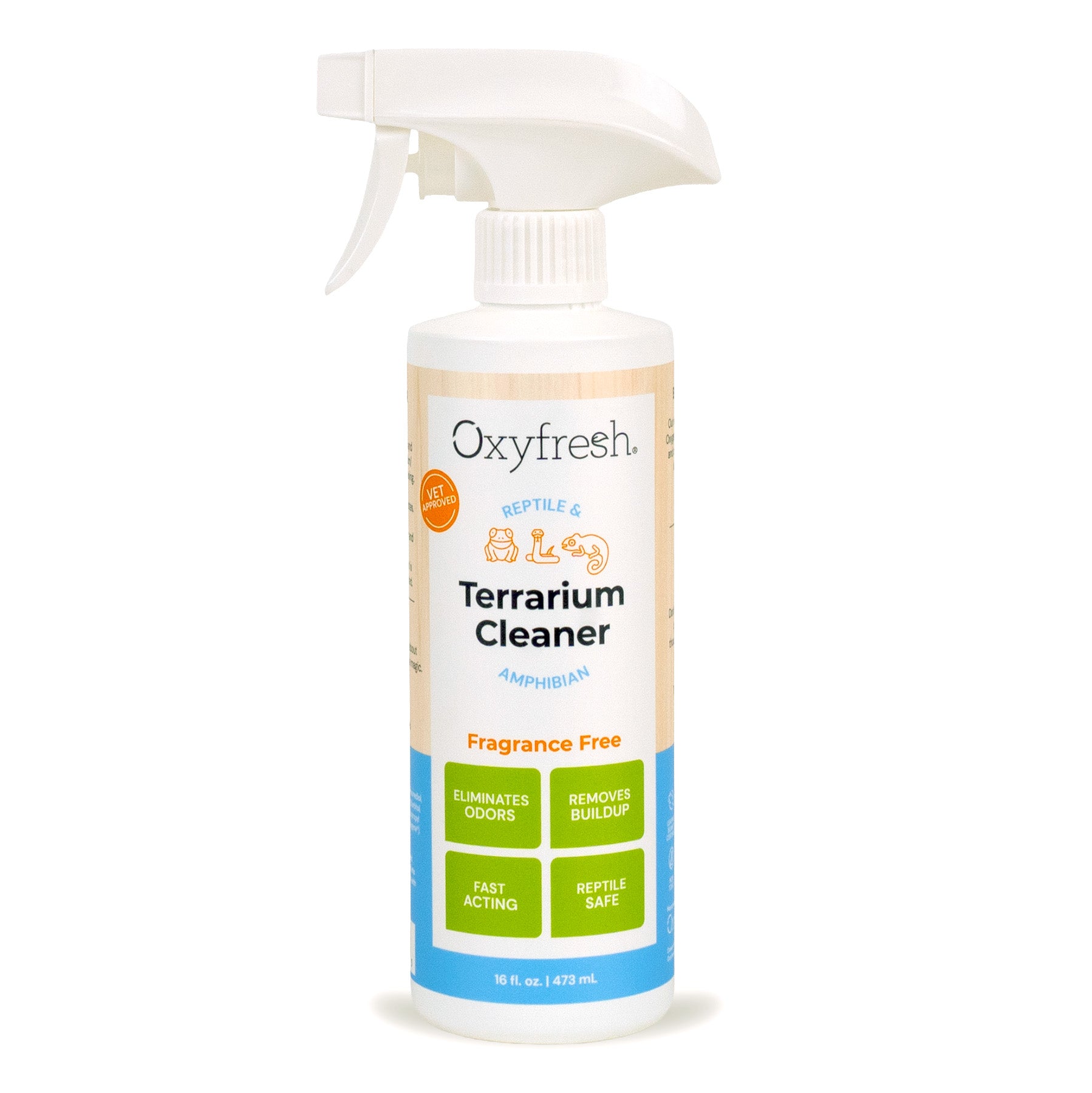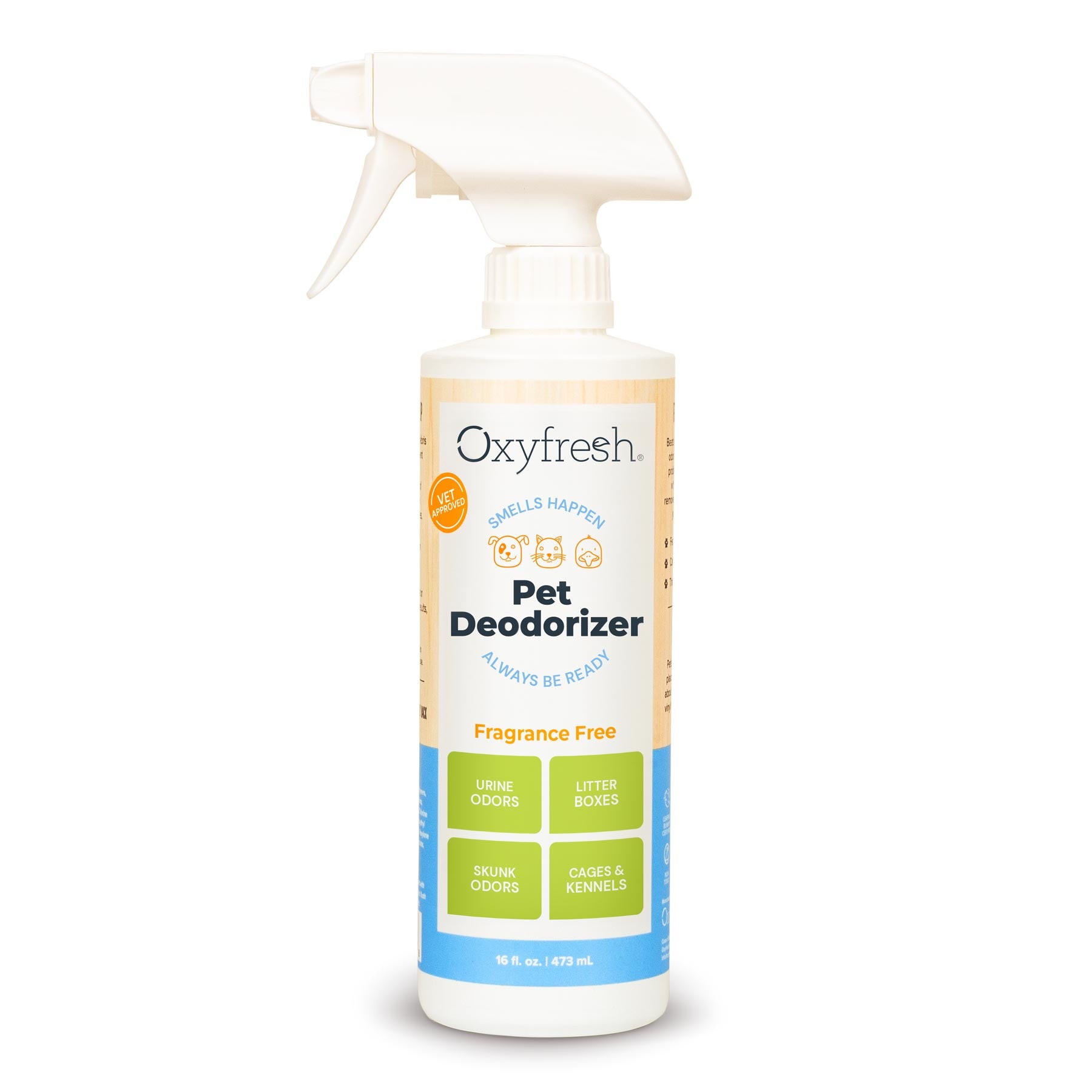No three words are more terrifying to a snake parent than YOU’VE GOT MITES. (If it makes you feel any better, it’s a common problem that plagues many-a-snake-lover.)
Time is of the essence when you’re dealing with mites on snakes, as a full-blown infestation can mean thousands of mites. So without delay, read on for how to identify and get rid of snake mites.
Snake Mites: What Am I Dealing with Here?!
Snake mites are parasitic bugs that feast on the blood of snakes. (In their free time, they like to watch vampire movies.) The mite lifecycle occurs in five stages: egg, larva, protonymph, deutonymph and adult. An egg can become an adult mite in as little as one week.
Adult mites feed on the snake, and (noooo!) mate like crazy, producing a new generation of mites. That’s why a mite infestation can quickly spiral out of control and harm your snake if they are not eradicated quickly and completely.
Getting rid of snake mites is much easier if you have a single snake. If you have multiple snakes, the task is more difficult, but don’t worry. It can be done!
How to Identify Snake Mites
Fortunately, snake mites are easy to identify with the naked eye. They look like tiny black, grey or red specks or bugs on the snake’s skin.
If you have superhero vision (or a pair of readers) you may even be able to see the tiny black bugs moving around on your snake’s skin. Creepy fact: the more they eat, the bigger they get! These parasitic bugs especially like to cluster along the eyes, nostrils, and skin fold beneath the lower jaw of a snake.
If your snake is heavily infested with mites, you may notice mites on your hands after holding your snake. Instead of making a sandwich, please go wash your hands immediately. (And don’t worry – the mites are species specific and won’t take up residence on your body.)
Additional Signs of Snake Mites
- Snake is soaking in water excessively – this is to drown the mites, and you may see black specks floating in the water. Don’t mistake this for dirt if you suspect mites.
- Snake is lethargic and not eating well – this can be due to anemia from blood loss.
- Snake is anxious and irritable – hey, we would be too!
- Snake has raised scales or swollen eyes.
- Snake is restless and moving around more than normal, as though unable to get comfortable.
- You see mites on shed skin, the snake enclosure or snake bedding – keep in mind, if the mite infestation is bad, it may be hard for your snake to shed its skin.
- Ash-colored debris on their scales. That’s mite droppings, aka mite poop!
Pro tip: If you’re an overachiever, how to identify snake mites is easy as 1, 2, ... tape! Simply put a piece of tape on one of the hot-spot areas where mites like to hang out on snakes. Then put the tape on a white piece of paper. If there are mites present, you’ll likely see tiny black bugs moving around on the paper.
Where Do Snake Mites Come From?
- Changes to the snake enclosure: If you’ve bought new decorations, supplies, or snake bedding, there’s a chance it could be contaminated with mites or their eggs. Make sure you know where your snake supplies are coming from and what’s in them. And while the odds are slim, even things like untreated wood could be housing mites.
- Cross contamination: Snakes can be like potato chips ... it’s hard to have just one. So if you’ve recently added a new snake to your crew, there’s a chance it was infected with mites. Even the cleanest pet stores and breeding places can get mites from time to time. And if it’s not a clean facility, well, the odds of mites go up even more.
- Snakes gone wild: Snakes from the wild are more likely to have mites versus snakes bred in captivity. Whenever you bring in a new snake, it’s smart to keep it in a separate cage for three weeks to make sure it doesn’t have mites that can transfer to your other snakes.
- Poor hygiene: If you have multiple snake enclosures and aren’t washing your hands after handling each snake, you could transfer mites from snake to snake. Same holds true if you have a fellow snake parent over and they handle your snake before washing their hands. Remember – snake mites won’t feed on you, but they will use you as a carrier if given the chance.
- You’re slacking on cleaning duties: If you’re not cleaning your snake’s enclosure on a regular basis or not doing a very good job (we see you cheating on the corners), you could be inviting pests to take up residence inside. Snake mites can be found anywhere in the enclosure and substrate (snake bedding), so do the kind of cleaning job that would make your grandma proud.
Snake Mite Treatments
Getting rid of snake mites involves both treating your snake and the snake’s enclosure.
For mites on your snake, the wisest course of action is to call the vet about the proper snake mite treatment for your situation. Insecticides like Ivermectin or other pyrethroids are ultra-effective on snake mites, but since they are toxic, they are best administered professionally. Your vet will also advise whether they want you to spray down your snake’s enclosure with an insecticide.
If you prefer snake mite treatments that are less toxic, try:- Betadine baths (povidone-iodine solution): This tried-and-true snake mite treatment involves soaking your snake in a Betadine bath. For the bath, use a plastic container with a lid (use an electric drill to drill the holes if need be). The water temp should be between 75-85 degrees and NOT deep enough for your snake to drown. (Supervise your snake in the bath like any good pet parent.) Your snake should soak in the bath for at least 20 minutes, but no longer than an hour. And you’ll feel super-satisfied to see all those drowned mites floating in the water post-bath. Remove your snake from the container, and with a Q-tip dipped in mineral oil, do a scan of your snake’s skin, removing any remaining mites. Pay particular attention to the chin, belly and vent fold. Repeat this process every other day for a week when you’re dealing with mites on your snake.
- Carbaryl powder: To use this snake mite treatment, put your snake in a separate container. Lightly dust your snake with the powder, being careful to avoid the eyes, nostrils and mouth. Allow the powder to sit for the recommended amount of time (usually around 10-20 minutes). Remove the powder as directed, typically by brushing the powder off or rinsing the snake in warm water. You may need to repeat the application over the next few weeks depending on how severe your mite infestation is.
How to Get Rid of Snake Mites from Your Snake's Enclosure
Do a deep clean of your snake’s enclosure and replace substrate twice a week for a month when you’re dealing with mites. Otherwise, if you’re reintroducing your pet to a mite-filled living environment, the problem will persist.
- Relocate your snake to a safe spot (e.g. Rubbermaid tub with a lid and air holes). This container will need to be cleaned and disinfected once they’re removed from it so you’re not transferring mites back and forth.
- Empty out your snake’s enclosure. Throw out old snake bedding, wood furnishings, hide boxes, etc. – anything that’s porous and can hide mite eggs. When you have snake mites, now is not the time to be frugal. During this time of deep cleaning, you’ll want to use newspaper or paper towels for your substrate.
- Partially fill up the terrarium with hot water and a squirt of dish detergent, preferably a free and clear brand (no dyes/scents). Soap is necessary to penetrate mites’ waxy exoskeletons, so you can drown the mites ... and have zero regrets! Do this in the bathtub unless your nickname is Hercules.
- After washing your snake’s enclosure with soap and water, you’ll want to spray it down with a bleach solution (2 T. bleach to 1 quart water), or if you’ve decided to break up with your bleach habit, use a snake-friendly terrarium cleaner. Then rinse it away and dry thoroughly.
- For any items that will go back into the snake’s enclosure (e.g. water dish), soak in hot water and dish soap or spray down with a reptile-safe cleaner/disinfectant, and then rinse thoroughly. Make sure all items are completely dry before adding back into the snake enclosure.
- Vacuum around the tank and then empty the bag into the outside garbage.
- Return your snake to the enclosure, wash your hands, and then go get yourself a snack ... you’ve earned it!
Best No-Bleach Terrarium Cleaner
Bleach is harmful to the delicate skin of snakes AND they hate the smell of it (not to mention they collect chemical particles from the air with their tongues), so remember: if you do choose to disinfect the enclosure or your snake’s dishes with bleach, make sure you rinse it away completely.
If you’re a bleach-free pet parent like us or simply looking for more non-toxic ways to keep your snake’s enclosure clean, we recommend Oxyfresh Terrarium Cleaner.
This is the only terrarium cleaner on the market formulated with the proprietary NON-TOXIC oxidizing ingredient Oxygene® to neutralize harmful bacteria, eliminate odors completely, and get a snake enclosure so clean, you could eat out of it (if that’s your thing).
Oxyfresh Terrarium Cleaner is 100% snake friendly with no fragrances, harsh chemicals, bleach or ammonia. It can be used on glass, plastic, vinyl, acrylic, and even fake plants. So make cleaning less of a chore – and show those mites who’s boss – with Oxyfresh Terrarium Cleaner.
YOU GOT THIS.

